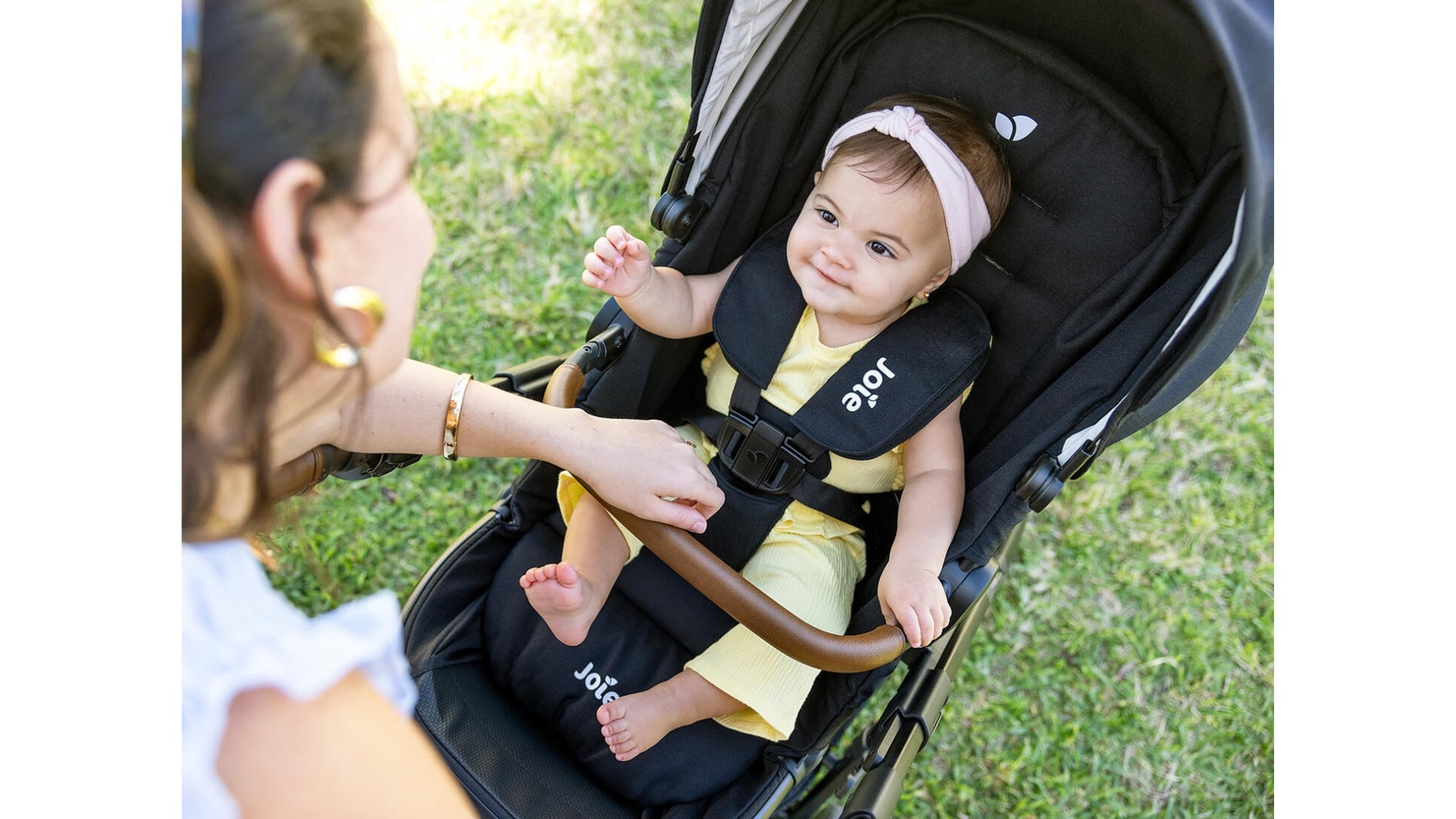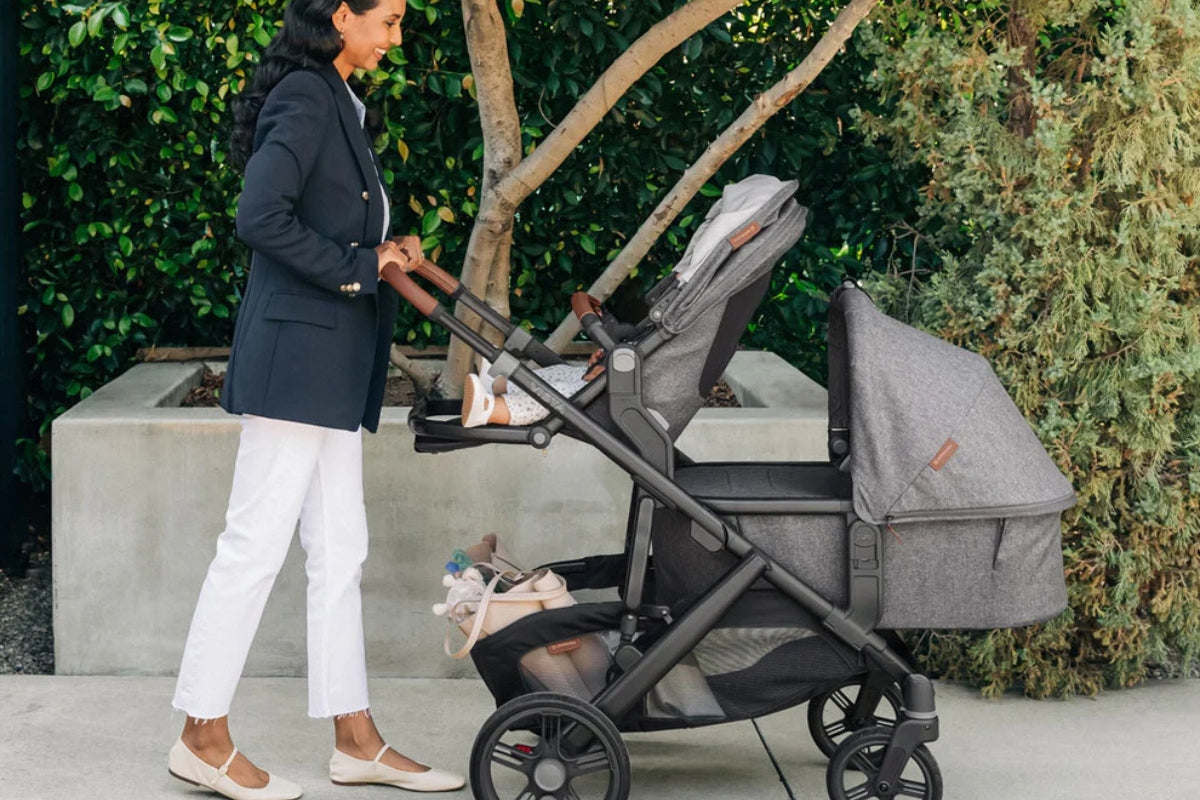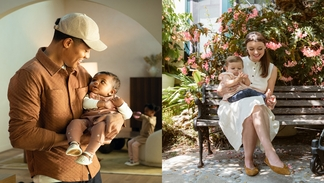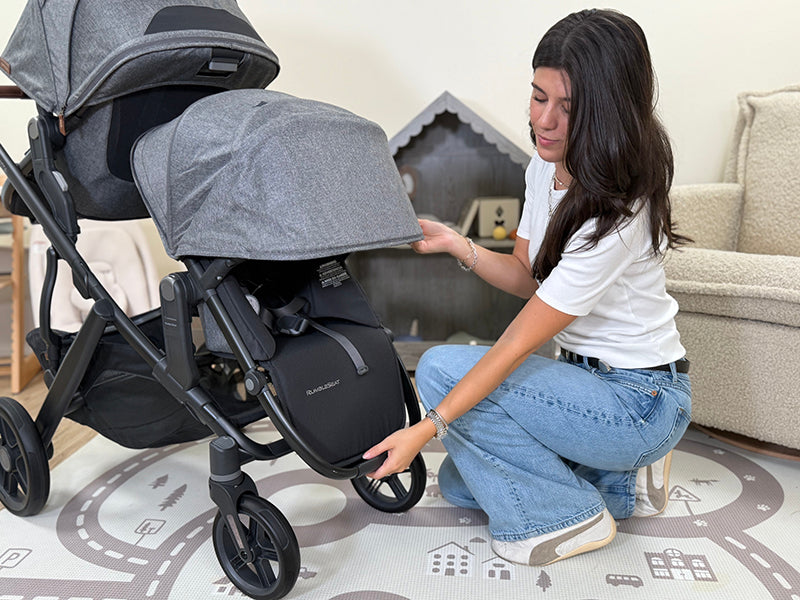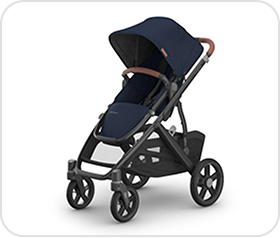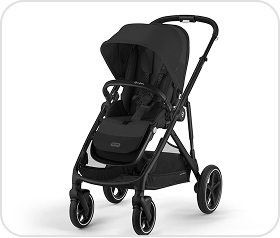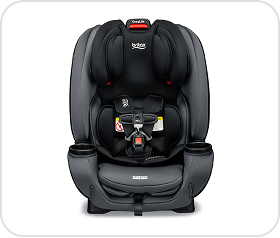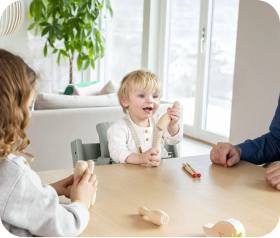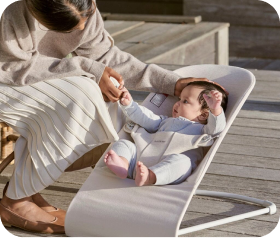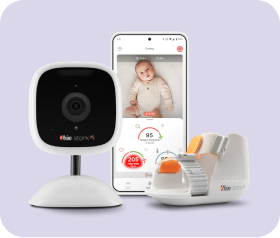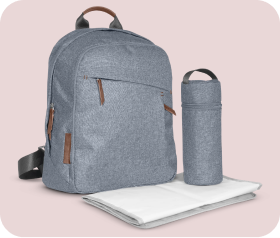
Newborn Must-Haves: Your Baby Registry Starts Here
Welcoming a new baby is one of life’s biggest and most joyful milestones. As the countdown begins, you naturally want to have everything ready to greet your little one when they arrive. But once you start diving into the world of baby gear, it can feel like you’ve opened the floodgates—every product promises to be essential, and the options seem endless.
Here’s the good news: getting ready for your baby shouldn’t feel like a chore. This season is meant to be full of wonder—whether you’re picking out the perfect crib or narrowing down your car seat options. With so many registry guides out there, it’s easy to feel buried under recommendations that don’t truly apply to you. That’s why we’re here—to make things simple, clear, and actually helpful.
We know that every family is different. That’s why this list focuses on the essentials—what we believe are the real must-haves for any baby registry. After helping countless families, and years of hands-on experience (as parents ourselves), we’ve learned what matters most.
We’re thrilled you’ve found us. Think of this guide as your roadmap—we won’t let you fall down the rabbit hole. Our goal is to help you shop with confidence, feel supported, and focus on the joy of preparing for your baby.
So, let’s jump in. Here are the foundational baby items we believe every parent should start with.
*Photo of Maxi-Cosi Starling Smart Bassinet Kindred Collection
Do You Really Need a Bassinet? Here’s Why We Say Yes
You might be thinking: “If I already have a crib, do I actually need a bassinet too?” Technically—no, you don’t. A crib that’s newborn-safe will absolutely work from day one. But if you ask most new parents who’ve been through those early weeks? They’ll probably tell you a bedside bassinet made all the difference.
Used mostly for the first 4–6 months, a bassinet may not be the longest-lasting piece of baby gear, but it’s one of the most worthwhile. Here’s why.
It Keeps Baby Close (And That’s a Big Deal)
The early weeks are full of unpredictable wake-ups, night feeds, and constant check-ins. Having your baby within arm’s reach can make a world of difference—both practically and emotionally.
Why it matters:
-
You can peek at your baby without getting out of bed.
-
You won’t be running across the house every time they stir.
-
The compact footprint means it fits neatly into tight bedroom spaces.
It Supports Safer Sleep
A bassinet encourages room-sharing (not bed-sharing), which is recommended for the first 6–12 months to help reduce the risk of SIDS. It’s also designed with newborns in mind, often featuring breathable materials and mesh sides for improved airflow and visibility.
It’s More Comfortable—For Everyone
Newborns feel secure in smaller, enclosed sleep spaces, which mimic the cozy environment of the womb. That sense of comfort can make for smoother transitions and calmer nights. And let’s be honest—having baby close makes those 2 a.m. feeds a whole lot easier.
Choosing the Right Bassinet
There’s no shortage of bassinet styles out there, from sleek and simple to fully loaded with tech features. Whether you want all the bells and whistles or just a straightforward sleep space, there’s something that will work for every family.
Key Features to Prioritize:
-
Breathable mattress: Helps regulate airflow and supports safe sleep.
-
Mesh sides: Let you see baby easily while improving ventilation.
-
Height adjustability: Ideal for high beds or post-birth recovery.
-
Space-saving design: Look for legs that slide under your bed to conserve floor space.
Types of Bassinets to Know
*Photo of UPPAbaby Bassinet with UPPAbaby Bassinet Stand
Standard Bedside Models:
Basic doesn’t mean boring—these bassinets do exactly what they’re meant to: keep your baby nearby, safe, and comfortable.
High-Tech Sleep Helpers:
From rocking and vibrating to white noise and responsive motion, these smart bassinets offer extra support for sleep-challenged newborns—and their tired parents.
Multi-Tasking Sleep Spaces:
-
Stroller-Integrated Bassinets:
Some stroller systems include a fully sleep-rated bassinet that can double as baby’s main sleep space when used with a compatible stand. Ideal for families who want streamlined gear that serves more than one purpose. -
Playards/Travel Cribs with Bassinet Mode:
These versatile options often include a removable bassinet insert for the newborn months, then convert into a play yard or toddler sleep zone as your baby grows. Great for travel and bedside use.
Bottom line? A bassinet might not be forever, but it’s incredibly helpful during those first few blurry months. It supports safer sleep, keeps things convenient, and brings comfort to both baby and parent. When your little one can sit up on their own, it’s time to move to the crib—but until then, a bassinet is one item you’ll be glad to have.
Explore >>> Bassinets & Cribs
Designing a Nursery That Grows with Your Baby
*Photo of the Stokke Sleepi Mini
Setting up your baby’s nursery is one of those joyful tasks that brings your growing family into focus. It’s more than just creating a cozy space—it’s about building a room that adapts as your baby grows. And one of the best ways to set yourself up for long-term success? Choose nursery furniture that’s durable, convertible, and designed to last.
Sure, it’s tempting to go for budget finds when you’re facing a long list of must-haves. But when it comes to nursery furniture, this is where quality really counts. Investing in well-made pieces now can actually save you time, money, and frustration later.
That dresser you buy today? It could still be in your home decades from now—maybe even passed down when your child decorates their first apartment. So as you browse nursery options, think about longevity.
Look for:
-
Solid wood (avoid particle board when possible)
-
GREENGUARD Gold Certified materials for healthier indoor air
-
Don’t forget to plan ahead, as custom furniture can take several weeks to arrive.
Cribs: Traditional or Convertible?
*Photo of Dadada Spirit 8-in-1 Convertible Crib
Your baby’s crib will be their main sleep space for the next couple of years—usually until they learn how to climb out and make a break for it around age two. So the crib you choose now should reflect how you plan to use the room long term.
If you love updating spaces and look forward to a future themed toddler room, a traditional crib might be all you need before transitioning to a fun toddler bed later.
But if you’d prefer something that grows with your child, a convertible crib is the way to go. These versatile models start as a crib and transform into a toddler bed, daybed, and in some cases even a full-size bed. One piece of furniture can cover all their sleep stages—from newborn to young adult.
Pro tip: Buy the conversion kits when you purchase the crib. Styles, finishes, and parts can get discontinued quickly, and you’ll save yourself the headache of trying to track them down later.
Storage Staples: Dressers, Armoires, and Nightstands
*Photo of Dadada Merry 6-Drawer Dresser & Dadada Soho Crib 3-in-1 Convertible Crib
Storage may not be the most glamorous part of nursery design—but it’s one of the most important. And just like with your crib, it pays to go for high-quality construction when choosing dressers, chests, or nightstands.
These are the pieces that will see the most daily use, so look for materials and features that are built to hold up.
Key Features to Look For:
-
Real wood construction
-
English dovetail joints for strength
-
Anti-tip hardware for safety
-
Soft-close drawers (you’ll thank yourself during nap time!)
Tip: Match your furniture pieces now if possible. That beautiful full set may not be available later—and color finishes can vary between production runs.
Short on space? Try:
-
A tall chest instead of a wide dresser
-
Narrow armoires that maximize vertical storage
-
Three-drawer dressers that offer functionality without taking over the room
Changing Stations: Options for Every Space
*Photo of Natart Matty Changer
No matter how you set it up, a designated diaper-changing spot will make life easier. From traditional setups to portable options, there’s a changing solution for every nursery.
Standalone Changing Tables:
If space isn’t an issue, a separate changing station provides dedicated storage and a permanent home for all your diapering supplies.
Changing Trays for Dressers:
A popular space-saving option—these trays attach securely to the top of a dresser and are easy to remove later when you no longer need them.
Foam Changing Pads:
Modern and minimalist, these wipeable, portable pads sit right on top of a dresser and can be moved between rooms. Anti-slip bottoms and safety straps keep them secure while offering a mess-free cleanup.
Your Nursery Chair: A Seat That Supports You
*Photo of Best Chairs Heatherly Power Swivel Glider Recliner
Let’s talk about the most underrated piece of nursery gear: the chair. Sure, your baby will love being snuggled in your arms—but where you sit while doing that matters more than you think.
Late-night feedings, midnight wake-ups, and early morning rocking sessions all become more bearable (and even enjoyable) in a chair that supports your back, neck, and tired body.
What to Consider in a Nursery Glider or Recliner:
-
Size + Fit: A high back or wider seat might be essential if you're taller or want extra room to cuddle.
-
Reclining Mechanism: Power recliners offer smooth push-button motion—great when you're holding a baby. Manual recliners tend to be more budget-friendly and low-maintenance.
-
Footrest Style: Ottomans are cozy, but integrated footrests save space.
-
Fabric: Performance materials make cleanup easier and stand up to daily use.
-
Built-in Support: Look for lumbar cushions or added back support for those longer sits.
Neutral tones are a smart move. While your nursery decor might change, a well-chosen chair can evolve into a reading nook, family room favorite, or cozy corner long after the baby stage.
Explore our Furniture Collection
For more reading on Nursery Furniture check out:
- Best Nursery Furniture for Smaller Spaces
- Creating a Gender Neutral Nursery
- The Best Cribs and Sleep Gear for Babies
Nursery Essentials You’ll Actually Use Every Day
Decorating your baby’s room is a lot of fun—but the real magic happens when your nursery setup makes everyday life easier. Beyond the furniture and aesthetics, there are key items that play a vital role in your baby’s comfort, safety, and sleep quality (and your peace of mind, too). These essentials are the unsung heroes you’ll reach for constantly.
*Photo of Naturepedic Organic Breathable Crib Mattress - 2-Stage
Crib Mattress: The Foundation of Safe Sleep
Choosing a crib mattress might seem simple—but not all are created equal. The mattress you pick will directly impact your baby’s sleep safety and comfort from day one, so it’s worth getting right.
What to Look For in a Crib Mattress:
-
GREENGUARD Gold Certified: Ensures low chemical emissions for cleaner nursery air.
-
Organic, Breathable Materials: Safer and more comfortable for baby’s developing respiratory system.
-
Firmness: Infants require a firm, supportive sleep surface to reduce SIDS risk.
-
Foam vs. Innerspring:
-
Foam mattresses are lightweight and easy to handle during sheet changes.
-
Innerspring mattresses typically offer better durability and hold their shape over time.
-
-
Waterproof Protection:
-
Some mattresses come with built-in waterproofing.
-
If not, add a separate waterproof cover—but be mindful that it may affect breathability.
-
-
Dual-Sided (Two-Stage) Design: One firm side for infants and a softer side for toddlers—perfect for use in convertible cribs as your child grows.
Explore >>> Mattresses & Bedding
Swaddles: The Newborn Soothing Trick
Swaddling is a time-tested way to help your baby feel calm and secure. Mimicking the close quarters of the womb, swaddles can reduce the startle reflex and prevent tiny hands from scratching delicate skin.
Choose from:
-
Traditional cotton swaddle blankets (ideal if you’re comfortable folding and wrapping)
-
Velcro or zip-up swaddles that make middle-of-the-night changes much easier
Sleep Sacks: Safe Sleep After the Swaddle
Once your baby begins to roll over (usually between 2 and 4 months), it’s time to graduate from the swaddle to a sleep sack. These wearable blankets offer a safe, cozy sleep environment without the risks of loose bedding.
Bonus: Many brands offer sleep sacks in toddler sizes, so you can stick with what works as your child grows.
Humidifier: A Small Addition with Big Impact
A nursery humidifier helps maintain ideal air moisture, which keeps dry skin, stuffy noses, and irritated airways at bay. It’s especially helpful during dry winter months or when your baby has a cold—which, let’s be honest, is bound to happen sooner or later.
Consistent humidity can also improve overall sleep quality, making it a simple but powerful addition to your setup.
Sound Machine: Consistent, Soothing Sleep Support
White noise is a game-changer for many families. A sound machine can block out household noise, create a calm environment, and help babies settle into a predictable sleep routine.
Tip: Choose a sound machine that includes true white noise rather than music or nature sounds, which can be too stimulating for young babies.
Baby Monitor: Stay Connected from Anywhere
Even when you’re not in the room, a baby monitor helps you keep tabs on your little one—whether you’re in the kitchen, outside on the deck, or at work checking in while a caregiver watches your baby.
Monitor Options:
-
Smart Monitors:
Ideal for tech-forward families. These systems typically connect via WiFi or Bluetooth and may feature:-
Motion and breathing tracking
-
Air quality and room temperature monitoring
-
Sleep insights and alerts
-
High-definition video with remote access
-
-
Audio-Only Monitors:
Simple, reliable, and often more budget-friendly. Great for smaller homes or if you’re not looking for all the extra data.
Pro Tip: Pick the monitor that fits your lifestyle. If you crave detailed insights or live in a larger space, a smart monitor may be worth the investment. For smaller homes or if you prefer simplicity, an audio monitor gets the job done.
Everyday Essentials for the Rest of the House: Loungers, Playards, Highchairs & More
*Photo of UPPAbaby Mira and UPPAbaby Remi
Once you’ve got the nursery sorted, it’s time to think about how baby fits into the rest of your home. Whether you're navigating a multi-story house or just want convenience in every room, having versatile gear in key spots can make daily life so much easier.
These smart, practical items help keep baby safe, comfy, and close—while giving you some much-needed flexibility.
Playards & Travel Cribs: More Than Just for Travel
*Photo of 4moms Breeze Plus Playard
A portable crib or playard is one of those items you’ll use in ways you didn’t even expect. Yes, it’s great for travel—but it’s also a handy napping spot, changing station, and eventually a play-safe area for toddlers.
When choosing one, think about how you’ll use it:
-
Need it mainly for trips?
Opt for a super lightweight model with a carry bag for easy portability. -
Using it at home too?
Look for built-in features like a bassinet insert, changing table, diaper organizer, and zip-down front for easy access. -
And don’t forget style:
This will live in your space for a while—choose a color or design that complements your home.
Top features to look for:
-
GREENGUARD Gold Certification
-
Washable, breathable mattress
-
Bassinet mode for newborn stage
-
Quick, one-handed fold and setup
Explore >>> Playards/Travel Cribs
Check out >>> Best Playards/Travel Cribs
Baby Loungers & Swings: Rest Stops on Every Floor
*Photo of Joie Baby Cinnamon 2-in-1 Glider & Rocker and Joie Baby Miso 2-in-1 Swing & Rocker
A safe, cozy spot for your baby to lounge while you get things done is a daily lifesaver. Whether you're folding laundry or sipping your (reheated) coffee, loungers and swings give you some hands-free freedom while keeping baby nearby.
Options to consider:
-
Self-Soothing Loungers:
Lightweight and responsive to baby’s natural movements—easy to move around the house and perfect for travel. -
Motorized Swings:
These offer multiple soothing motions (rocking, swaying, bouncing), sometimes with music or nature sounds. They’re bulkier, but great for calming fussy moments.
Pro Tip: Go for a lounger with a higher weight limit that converts to a toddler chair—it stretches your use and adds value.
Explore >>> Baby Loungers & Swings
Playmat: Hello Tummy Time!

From the very beginning, a soft, cushioned playmat is a daily essential. It provides a safe place for tummy time—vital for helping baby develop core and neck strength, which leads to milestones like rolling, sitting, and crawling. Bonus: It gives baby a sensory-rich place to explore while giving you a break.
Explore >>> Playmats
Read >>> The Importance of Tummy Time
Feeding Support from Day One
Whether you're breastfeeding, bottle feeding, or doing a little of both, having the right tools makes a big difference.
Nursing Pillow:
A well-designed nursing pillow supports both you and your baby during feeding sessions, reducing strain on your arms, shoulders, and back. It’s useful no matter your feeding method—and some even double as loungers or tummy time props later on.
Highchair: Sooner Than You Think
*Photo features the Stokke Tripp Trapp Highchair
Highchairs may seem like a later-stage item, but that first taste of solids comes fast. Many highchairs now include newborn-friendly features like reclining seats or inserts, so you can use them as a comfy lounger before baby is sitting up.
Here’s what to consider:
-
Your kitchen and dining space layout
-
Table height and chair adjustability
-
Convertible models that grow with your child
-
A design that fits your home’s look and feel
These at-home staples aren’t just nice-to-haves—they’re daily-use heroes that add comfort, convenience, and function to your space. Add them to your registry now and save yourself the scramble later.
Explore >>> Highchairs
Read >> Best Highchairs
Building a Car Seat Game Plan: How Many Should Go on Your Registry?
Short answer? As many as possible.
*Photo includes Romer Juni Infant Car Seat
Your baby registry isn’t just for cute clothes and gear for the newborn phase—it’s your best chance to map out your child’s full car seat journey, from birth through the booster years. Since kids will outgrow multiple seats over time, thinking ahead now can save you from unexpected costs and last-minute dashes to the store later.
Understanding the Car Seat Stages
As your child grows, their car seat needs will change. Here’s a breakdown of what to expect:
-
Rear-Facing:
This is the safest position for babies and toddlers. While state laws typically mandate rear-facing until at least age 2, many car seats allow extended rear-facing for children up to 50 lbs. It’s wise to keep them rear-facing as long as possible. -
Forward-Facing with a 5-Point Harness:
Once your child outgrows the rear-facing limits, they’ll graduate to forward-facing with a harness. This stage typically lasts until around age 5 or 6. -
Harness-to-Booster or High-Back Booster:
When it’s time to move on from the convertible seat, your child might use a harness-to-booster model (if you want to keep them harnessed longer) or transition directly to a high-back booster—provided they meet maturity and size milestones. Make sure your child can sit properly for the whole ride before making the switch. -
Backless Booster (Eventually):
A backless option is great for carpools or travel, but keep in mind that high-back boosters provide more side impact protection.

*Photo of Joie Rue, Joie Mint, Joie Chili Spin 360, Joie Saffron SI, and Joie Basil
Types of Car Seats: A Quick Guide
-
Infant Car Seat:
-
Designed for babies from birth to around 12 months (exact limits vary).
-
Lightweight, portable, stroller-compatible.
-
Limited lifespan.
-
-
Convertible Car Seat:
-
Covers both rear- and forward-facing stages.
-
Can be used from birth through age 5 or 6, depending on model specs.
-
-
Rotating Convertible Car Seat:
-
Offers 360° rotation—making it easier to get your child in and out of the car.
-
Same usage range as standard convertible seats.
-
-
All-in-One Car Seat:
-
A true all-rounder: starts rear-facing and converts to a forward-facing seat and eventually a booster.
-
Fewer transitions, longer use.
-
-
All-in-One Rotating Seat:
-
Combines extended use with swivel convenience—maximum mileage with minimal fuss.
-
-
Harness-to-Booster:
-
Forward-facing only.
-
Transitions from a 5-point harness to a booster seat.
-
-
High-Back Booster:
-
Offers strong side protection and proper seatbelt alignment.
-
-
Backless Booster:
-
Lightweight and portable.
-
No side impact protection, but gets the job done for older kids.
-

*Photo of Joie Rue, Romer Veni and Joie Basil
Sample Car Seat Journeys
There’s no one "correct" sequence, but here are a few common setups:
-
Option 1: Infant Seat → Convertible Seat → Transitional or High-Back Booster
-
Option 2: Infant Seat → All-in-One Seat
-
Option 3: Convertible Seat → Booster Seat
-
Option 4: All-in-One from the start—no switching required
What to Look For When Choosing Car Seats
General Considerations:
-
Prioritize advanced safety features
-
Look for flame-retardant-free fabrics
-
Seek out GREENGUARD Gold Certification for lower chemical emissions
-
Make sure the seat fits properly in your vehicle
For Infant Seats:
-
Check stroller compatibility
-
Consider weight (you’ll be lifting it daily!)
-
Review height and weight limits
-
Look for flexible install options (with or without the base—especially helpful when traveling or using public tranist)
For Convertible & All-in-One Models:
-
Ensure they support extended rear-facing
-
Multiple recline settings add comfort
-
Built-in cup holders are a handy bonus
-
Consider portability if you’ll be switching vehicles often
- Prioritize easy installation
For Booster Seats:
-
Easy-to-use belt guides
-
Rigid LATCH for extra security
-
Lightweight for easy travel
-
Recline options and cup holders for comfort
*Photo Features Cybex Cloud T Sensorsafe Infant Car Seat and Cybex Callisto 360 All-in-One
Premium Safety Features To Prioritize
-
Stability Leg:
Anchors the seat to the vehicle floor to minimize rotation and spread crash forces more evenly. -
Rigid LATCH:
Offers stronger, more stable installation than flexible connectors by attaching directly to your car’s frame. -
Anti-Rebound Bar:
Adds rear-facing stability by limiting seat movement during a collision.
-
Energy-Absorbing Foam:
-
EPS Foam: Common but may become brittle with time.
-
EPP Foam: Lighter weight, more durable, flexible, and mold-resistant—typically used in higher-end models.
-
-
Side Impact Protection (SIP):
Enhanced shielding around the head and torso protects during side-impact collisions. -
GREENGUARD Gold Certified Materials:
Promotes better in-car air quality—an especially important bonus during those long drives and daily commutes.
Pro Tip: Your Registry Is Prime Real Estate
Car seats are expensive—and your registry is the perfect time to get ahead. Even if you won’t need every seat right away, including them gives friends and family a chance to help cover future needs.
In the end, the right car seat line-up should offer safety, confidence, and comfort at every stage. Whether you're starting with an infant car seat or going all-in with a convertible, planning now means less stress later. And if you need help navigating your options, we’re always here to assist!
Explore Our Car Seat Collections:
Read more on car seats:
- 10 Car Seat Safety Tips
- The Importance of Rear Facing
- Why Expiration Dates Matter
- Best Infant Car Seats
- Best Rotating Infant Car Seats
- Best Convertible Car Seats
- Best Rotating Convertible Car Seats
Stroller Smarts: How Many Do You Actually Need?
*Photo features the Silver Cross Reef 2 with Folding Bassinet
There’s no universal stroller that checks every box for every family. The best stroller setup for you will depend on how you live, where you go, and what features you value most. Some families get by with just one. Others? They build a little fleet.
Start with these questions to find your ideal stroller situation:
-
Will you mostly be using it in the suburbs, city, or both?
-
Is your daily route mostly sidewalks, trails, or bumpy terrain?
-
Do you want to use your infant car seat with the stroller?
-
Are there must-have features you won’t budge on?
-
Is a bassinet a priority for the newborn phase?
-
What accessories would make your life easier (or sanity intact)?
-
What’s your total budget for gear?
Finding a Stroller To Fit Your Lifestyle
*Photo features the Bugaboo Fox5 Renew
Suburban Multitasker
You’ll want a two-part system here: a lightweight car seat-compatible stroller for errands and a durable, full-size stroller that can handle neighborhood strolls and weekend park days with ease.
City Dweller on the Move
If you’re hopping on buses, navigating elevators, and squeezing down busy sidewalks, opt for a compact stroller that folds quickly and handles tight spaces like a pro.
Urban Walker
Your stroller is basically your car. You need big wheels, strong suspension, and a generous undercarriage basket for shopping bags, diaper bags, and the rest of your daily cargo.
Budget-Friendly Minimalist
Stick with a well-built mid-size stroller that offers a smooth ride and fits in the trunk. It’ll handle everyday needs without the clutter or cost of multiple models.
Expecting More Littles Soon?
Look into a single-to-double convertible stroller. These clever designs grow with your family—starting with one seat, then expanding when baby #2 joins the adventure.
Here’s the Reality: Most Parents Own Two
Even the most minimalist parents often end up with two strollers:
-
A travel-friendly or lightweight stroller for quick outings, errands, and travel
-
A full-size or rugged stroller for longer walks, tougher terrain, and daily routines
Together, they cover almost every use case—from the grocery store to hiking trails.
*Photo features Joie Nutmeg with Joie Mint
Expert Tips to Maximize Your Stroller Experience
-
Add the travel stroller to your registry. You’ll be glad to have it before your first trip.
-
Research add-ons before buying. Not all strollers support the same accessories—make sure your favorite has everything you need.
-
Register for those accessories, too. Small extras can make a big difference in day-to-day convenience.
- Opt for a stroller that offers a bassinet attachment or fully flat reclining seat. While many strollers are newborn approved when paired with an infant car seat, it is best to keep baby in a flat position for longer periods of stroller use.
*Photo features the UPPAbaby Minu with UPPAbaby stroller accessories
Handy Accessories That Make a Big Impact
-
Cup holder: Because hands-free coffee is a parenting essential
-
Snack tray: You’ll use it sooner than you expect—promise
-
Rain shield: Stay prepared for pop-up showers
-
Stroller caddy/organizer: Keep keys, phone, and snacks at your fingertips
-
Travel bag: Great for protecting your stroller on flights—and some brands include a travel warranty if you use their bag
-
Car seat adapters: Ensure your car seat and stroller are compatible from day one
Explore our Stroller Collections:
- Lightweight Strollers
- Single Strollers
- Jogging Strollers
- Convertible Strollers
- Double Strollers
- Twin Strollers
- Wagons
For more on strollers, dive into our stroller reviews:
- What Type of Stroller do I need
- Best Strollers for Newborns
- Best Strollers
- Best Travel Strollers
- Best Jogging Strollers
- Best Mid-Size Strollers
- Best Convertible Strollers
- Side-by-Side Double vs. Inline Double Stroller
Out and About with Baby: Must-Have Gear for Life Beyond the Nursery
When it’s time to take your little one out into the world—whether it’s a walk around the block or a weekend getaway—the small things makes all the difference. From hands-free babywearing to diaper duty on the fly, these items help you stay prepared and confident wherever the day takes you.
Baby Carriers: Hands-Free Snuggles On the Go
A baby carrier is your go-to for places your stroller can’t easily navigate—think tight grocery aisles, airport terminals, crowded events, or even just multitasking at home with a clingy baby. Sometimes, your baby just wants to be held close, and a great carrier makes that possible and practical.
Here’s what to look for:
-
Multiple Carrying Positions:
Look for a carrier that supports both inward- and outward-facing options, especially if you plan to carry beyond the newborn phase. -
Style – Wrap vs. Structured:
Structured carriers provide excellent support and easy buckling but can be bulky. Wraps offer a snug, custom fit and are great for newborns. -
Fabric Matters:
Breathable mesh or moisture-wicking fabrics are ideal if you’ll be wearing your baby during summer or live in a hot climate. -
Weight Range:
Planning to babywear into toddlerhood? Choose a carrier with a higher weight limit so it grows with your child.
Explore >>> Baby Carriers
Read >>> Best Baby Carriers
Diaper Bag: Your Everyday Command Center

You’ll take this bag everywhere—so pick one that fits your lifestyle. Whether you prefer a sleek backpack or a classic shoulder tote, make sure it has plenty of compartments to keep things organized. You’ll be carrying more than diapers—think bottles, snacks, wipes, extra clothes, sunscreen, toys, and even your own keys and wallet.
Pro Tip: Keep your diaper bag stocked and ready to go—restock essentials as soon as you get home so you’re always prepped for the next outing.
Explore >>> Diaper Bags
Read >>> Essential Diaper Bag Checklist
Portable Changing Mat: Don’t Leave Home Without It
A foldable changing mat is a true diapering essential when you're on the move. It gives you a clean, safe surface for quick changes anywhere—cars, parks, restrooms, you name it.
Look for one with:
-
A pocket for a diaper and wipes
-
Room for a backup onesie
-
Easy wipe-down surfaces
Blankets: The Ultimate Multi-Use Must-Have
Lightweight, breathable blankets are the MVPs of your on-the-go essentials. You’ll use them as nursing covers, burp cloths, impromptu changing pads, stroller shades, tummy time mats, and more.
Tip: Keep at least one in your diaper bag at all times—you’ll thank yourself later.
When you’re out with baby, a little preparation goes a long way. With the right mix of comfort, convenience, and practicality, you’ll be ready for everything!
Mighty Minis: Safety and Hygiene Must-Haves
These essentials don’t get much attention, but you’ll use them constantly—especially in the early months. Add a simple baby health kit to your registry with:
-
Baby thermometer
-
Nasal aspirator
-
Infant nail clippers
-
Finger toothbrush
-
Infant tub (bonus if it fits in your sink or folds for storage)
They may not be the “fun” gifts, but they’re absolutely essential—and ones you’ll reach for again and again.
The Final Check: You’re More Prepared Than You Think

Building your baby registry is more than just ticking off a list—it’s about setting yourself up for smoother days, sweet snuggles, and a whole lot of “I’m so glad we have this” moments. Whether you’re dreaming of strolls through the park, cozy feeding sessions, or hands-free grocery runs with your little sidekick strapped to your chest, the right gear truly helps you move through parenthood with more confidence (and a little more sleep).
Don’t stress about getting it all at once—your registry is your roadmap, not a race. Pick what fits your life, plan ahead where you can, and leave room for learning as you go. You’ve already taken the first step just by being here and getting curious. So go ahead—build the list that makes you feel empowered, prepared, and excited for all the magic to come.
We’re cheering you on every step of the way—and we’re always here if you need help picking that perfect stroller, carrier, or crib. You’ve got this!
Continue Reading:
- Baby's First Year: A Guide For Every Milestone
- Best Gear for Minimalistic Parents (How to Get the Most out of Your Gear)
- Mom Knows Best: Strolleria's Top Picks Straight from the Mamas!
- Joie, The Best Value In Baby Gear
Questions?
Strolleria is dedicated to making the baby gear buying experience less overwhelming for parents.
If you have more questions about Summer Gear, feel free to email us at cs@strolleria.com




